Incapacitated: Each Haripur resident allocated Rs7 per year for healthcare
The hospital staff attributes failure to low funds; residents blame it on staff’s dereliction.

The District Headquarter (DHQ) Hospital Haripur, it seems, is yet to serve its due purpose.
Commissioned in 2008 after a delay of over one and a half decade, courtesy of political wrangling and lack of interest of the local elected leadership, the Rs230 million hospital is not equipped with healthcare facilities a Type-B hospital of its type is meant to have.
Haripur is one of the biggest revenue generating districts of Khyber-Pakhtunkhwa, having the second biggest industrial zone of the province with over 150 operational industrial units and over 200 non-operational factories at Hattar Industrial Estate.
The healthcare facilities, however, belie this fact. The hospital lacks funds while its staff members have been accused time and again of dereliction and being unprofessional.
The hospital is currently being run in two buildings: the new DHQ building and its old building that was recently made into Women and Children (W&C) Hospital. The old building also houses one of the emergency units of the hospital.
The hospital’s Outdoor Patient Department (OPD) daily receives around 1,000 to 1,200 patients, while the OPD at the hospital’s old building daily receives around 100 patients.
Rs7 million are provided to the hospital annually by the health department, according to DHQ Medical Officer Dr Muhammad Nawaz. With a population of more than one million in Haripur, the budget works out to Rs7 per person per year.
The Intensive Care Unite (ICU) -- housed in the old building -- is non-operational; the hospital’s dialysis machine has not been used for several months due to absence of a trained technician.
Unhappy locals
While official sources attribute the hospital’s inefficiency to shortage of funds and understaffing, residents blame the hospital staff’s negligence for depriving them of required healthcare services and forcing them to bear the heavy cost of medical treatment at private hospitals.
A local trader, Adnan Khan, who recently visited the hospital, said the hospital sends almost all emergency cases to Ayub Medical Complex in Abbottabad, despite being adequately equipped to handle them.
“When pressed to admit emergency cases, the doctors come up with the justification that the patients need intensive care that cannot be provided at the [210-bed] hospital.”
Another attendant, Naeem Ahmed, claimed that every doctor has developed a strategy of appeasing some local political figures and those of vocal media persons. “These doctors are least concerned about the miseries of the common people.”
“How can we put the life of patients at stake by keeping them here when we are not fully equipped to handle their emergencies?” said a doctor at the hospital on condition of anonymity.
He said those that they can treat are admitted to the hospital and receive proper treatment.
Lack of funding and shortage of staff
Dr Nawaz said the W&C Hospital requires an annual funding of Rs6 million and a staff comprising four gynaecologists, four paediatricians, 10 female medical officers and 30 paramedical staff for operations.
Additionally, he said, Rs10 million are required for the provision of medicines at the hospital.
He added that a Statement of New Expenses was sent to the provincial government on January 2, which, while approved, remains pending with the finance department.
There are currently 17 medical officers, 49 nurses, two surgical specialists, two medical specialists, two gynaecologists, two eye specialists, one child specialist, one Ear Nose and Throat (ENT) specialist and a cardiologist serving at these two facilities.
Hospital sources said the hospital requires an additional 40 female medical officers, 40 nurses, four head nurses, one nursing superintendent, one nephrologists, one psychologist, one radiologist, one pathologist, 82 class-III employees including technical staff and 134 class-IV employees to work at full capacity.
Published in The Express Tribune, July 25th, 2011.



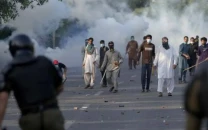

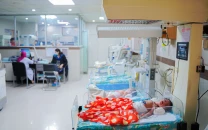
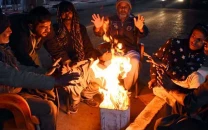

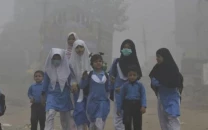







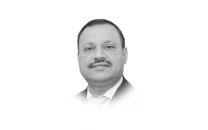


COMMENTS
Comments are moderated and generally will be posted if they are on-topic and not abusive.
For more information, please see our Comments FAQ